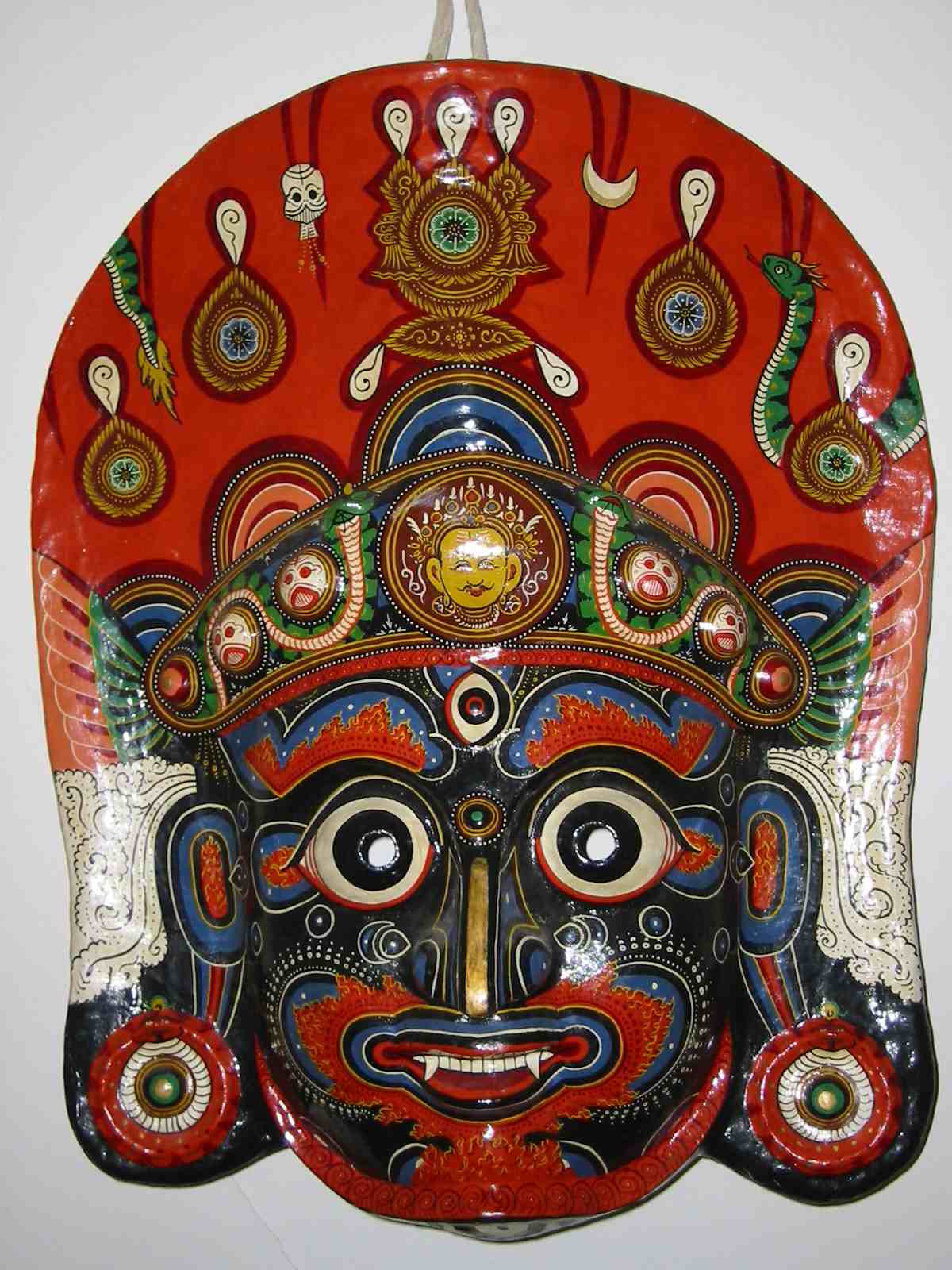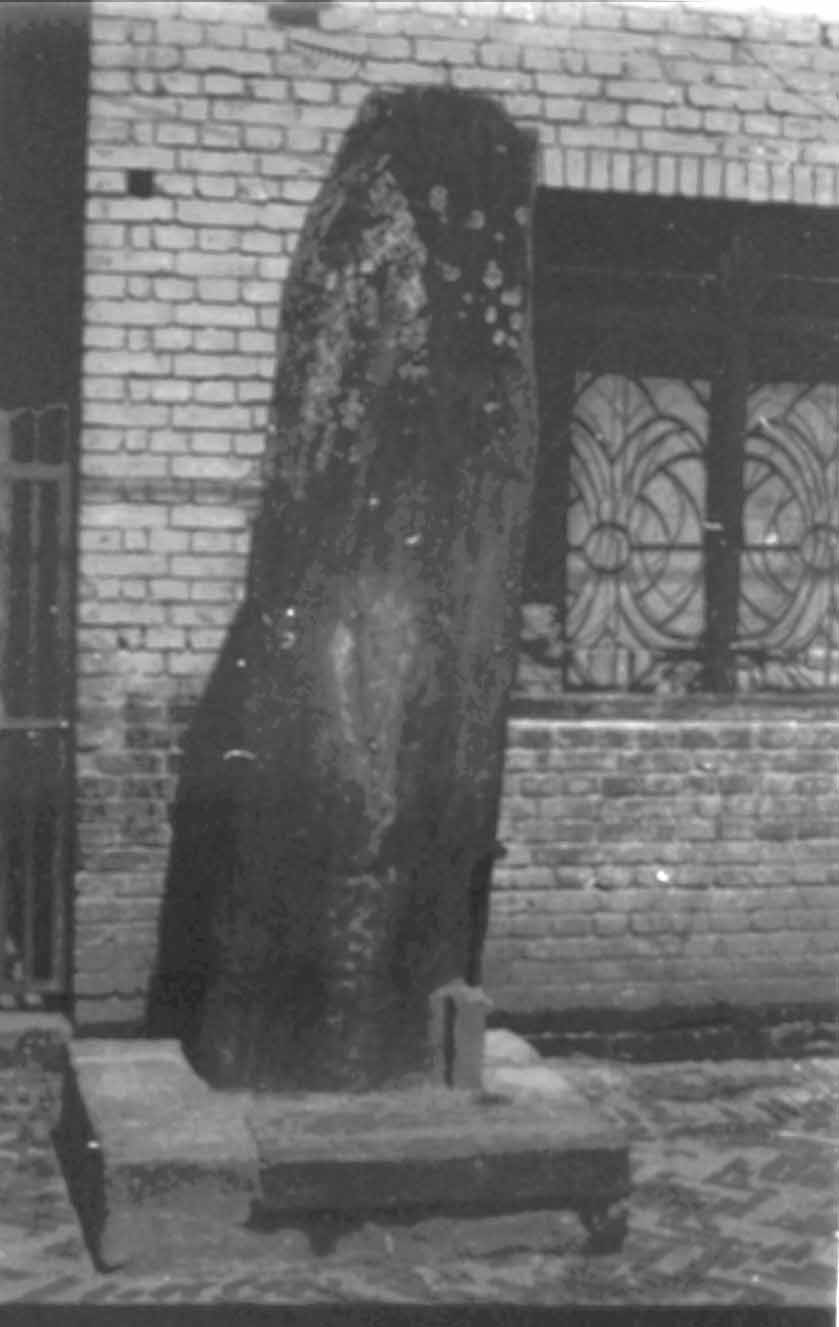The Photographic Mediation of a God
What’s in an image? If one follows Roland Barthes’ logic in Camera Lucida, the minute one snaps a photograph of a god-image one kills it by freezing it in time: the image is “absolutely irrefutably present, and yet already deferred” (1981, 77). How is it that photography kills the god-image? Or maybe even more important, how can one bring the image back to life? What makes a photograph “living,” according to Barthes is not the referent—which is always already dead, but how one views the physical image. Barthes argues that two elements are involved in such viewing. One element is studium, which is the banal exposition of information: “I glance through them, I don’t recall them; no detail ever interrupts my reading”(Barthes 1981, 41). The second element is punctum. These are unintentional details whose viewing “reverses the order of the things” (Barthes 1981, 118).
Iconography reduces all god-images to studium through two mediating
strategies: symbolism and idolatry. By mediating strategy, I mean to gloss
no particular school, method, or theory, but rather the wider tactics
by which god-images are “written over.”  The
first interpretative strategy, symbolism, erases the materiality of god-images
by positing them as material signs of spiritual transcendental categories.
In “Images and Symbols,” Mircea Eliade writes that “images,
symbols and symbolism have now become current coin” (Eliade
1969). Some fifty years later this symbolic “coin” has
circulated for so long and through so many hands that its human-made character
has been all but forgotten. Like an overused trademark, “symbol”
has passed into the background of the tacit taken-for-granted reality
of not only what it means to practice religious studies, but religion.Because
symbolism is such common currency, the implications of its use have become
obscured.
The
first interpretative strategy, symbolism, erases the materiality of god-images
by positing them as material signs of spiritual transcendental categories.
In “Images and Symbols,” Mircea Eliade writes that “images,
symbols and symbolism have now become current coin” (Eliade
1969). Some fifty years later this symbolic “coin” has
circulated for so long and through so many hands that its human-made character
has been all but forgotten. Like an overused trademark, “symbol”
has passed into the background of the tacit taken-for-granted reality
of not only what it means to practice religious studies, but religion.Because
symbolism is such common currency, the implications of its use have become
obscured.
In symbolic mediation worship is conceived as being given to the spiritual essence that the material image is perceived to actually reveal (Eliade 1959; Ricoeur 1970). In the broadest sense, the symbolic function has been posed as the general function of communication by which consciousness constructs all perception and discourse (Cassierer 1946). In the narrowest sense, it means something other than what is said (Ricoeur 1970). Always, however, the symbol is a vehicle at once universal and particular. Moreover, because symbols’ referents are often vague, the symbol is crucial for bringing together abstract scriptural concepts and concrete signs (Firth 1973; Ricoeur 1976).
The second mediating strategy, idolatry, interprets concrete gods such as Bhairava as material objects of irrational reverence or obsessive devotion. In the simplest sense, an idol is an image or statue of a deity fashioned to act as an object of worship. Yet often such worship is perceived as immoral because idolatry gives the name of God to that which is not God. For instance, all three religions of the Book—Islam, Christianity, and Judaism—condemn idolatry because it is the worship of a humanly manufactured signifier rather than the uncreated divine. Because all signification is dependent on material signs, however, all religions must worship matter to some extent. Accordingly, “idolatry” is not simply the worship of matter, but the accusation of another’s “strange worship” (Halbertal and Margalit 1992). Lingering in the rhetoric of the idol is one of the most persistent forms of orientalism. Historically, idolatry’s condemnation differs in the form it takes and towards whom it is directed, but in every situation idolatry is a strategy by which a community creates self-identity by othering others (Halbertal and Margalit 1992).
Idolatry has become an important academic strategy in the discipline of religious studies. Idolic reduction is not a critique about subjugating material signs to abstract ideals, but about accusing others of worshiping the wrong abstract ideals. Accordingly, idolic reduction is usually not used in its purely critical form, but rather in a twofold maneuver. First, the interpreter accuses the worshipper of misrecognition (the false worship of idolatry). Second, the interpreter introduces an abstract category that is given as the real addressee of the worshiper. The idolic reduction then is not merely the critique of idols per se. Like any accusation of idolatry, it alleges incorrect worship while implying the existence of a correct form of worship.


